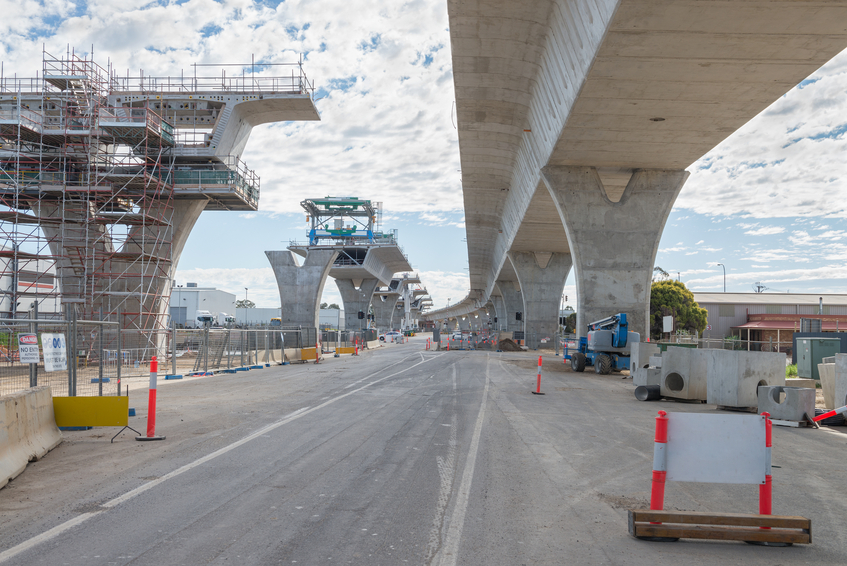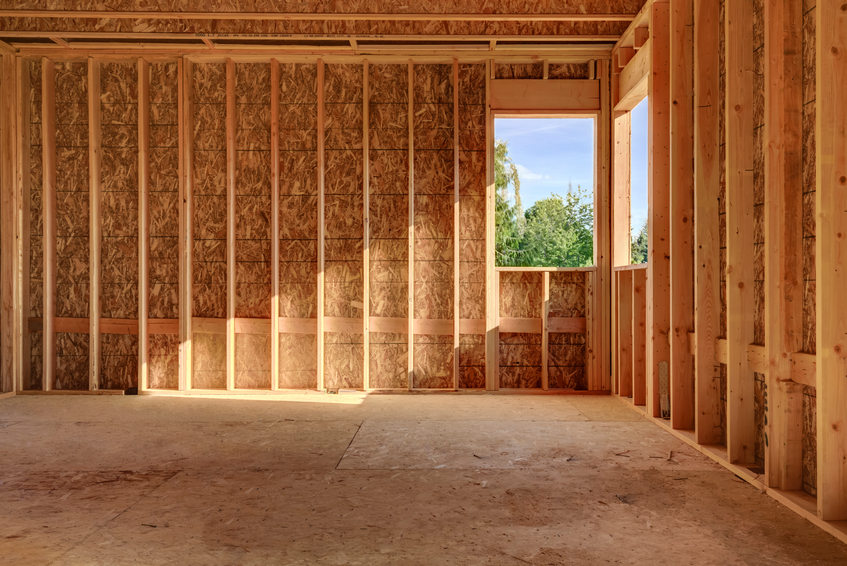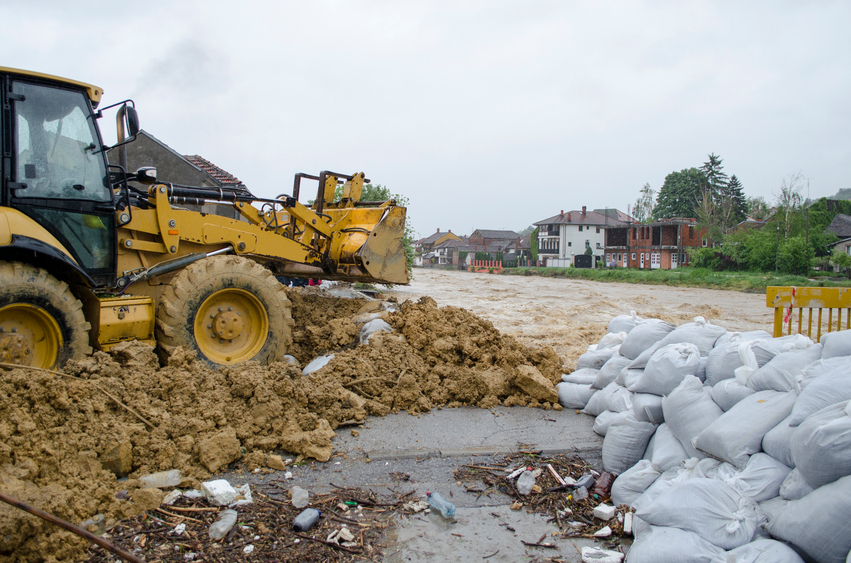Missouri Structural 30 PDH Discount Package 3
Guide for In-Place Treatment of Wood in Historic Covered and Modern Bridges (S04-020)
Determining the Cost/Benefit of Routine Maintenance Cleaning on Steel Bridges (S03-024)
A Guide to Elevating Homes for Flood Protection (S04-015)
Installing Seismic Restraints for Electrical Equipment (S05-009)
Installing Seismic Restraints for Mechanical Equipment (S05-008)

This online engineering PDH course delivers the best practices for repair and retrofit of fatigue cracks in steel bridges.
This course is also a guide for owners and consulting engineers to use for design and detailing of repairs and retrofits for fatigue cracks. It should be used in conjunction with existing specifications, codes, and engineering judgment. In addition to designing and executing the repairs and/or retrofits, there are numerous other steps involved in the inspection and assessment of a cracked bridge member.
When cracks are discovered in bridge elements (members or connections) in service, fatigue is usually the cause. Fatigue is the formation of a crack due to cyclic service loads. Fracture may be defined as rupture in tension or rapid extension of a crack, leading to gross deformation, loss of function or serviceability, or complete separation of the component. Periodic in-service inspection provides an opportunity to assure safety by detecting cracks before they grow to a critical size. The Federal Highway Administration has mandated a twenty-four month inspection interval for all highway bridges located on public roads which is intended to detect problems before they become critical to structural performance.
This 9 PDH online course is applicable to civil and structural engineers as well as consulting engineers who are interested in design and detailing of repairs and retrofits for fatigue cracks.
This PE continuing education course is intended to provide you with the following specific knowledge and skills:
- Familiarizing with the definition of fatigue and fracture in steel bridges
- Developing a fracture control plan and carrying inspections
- Selecting the proper repair and retrofit strategy
- Assessing fatigue effect using several approaches such as nominal stress approach, local stress approach, fracture mechanics approach, etc.
- Understanding the repair and retrofit methods such as surface treatments, impact treatments, etc.
- Identifying out of plane distortion due to secondary stresses
- Learning the repair methods specific to out-of-plane distortion such as: hole drilling, web gap softening, web gap stiffening, etc.
- Knowing the repair methods by loads induced fatigue
Upon successful completion of the quiz, print your Certificate of Completion instantly. (Note: if you are paying by check or money order, you will be able to print it after we receive your payment.) For your convenience, we will also email it to you. Please note that you can log in to your account at any time to access and print your Certificate of Completion.

This online engineering PDH course provides basic information on procedures for selecting and applying in-place treatments to bridges to prevent or arrest degradation, and discusses different approaches for minimizing damage caused by fire.
Wooden bridges have a long history of use throughout the world, and like bridges made of other materials, the service life of wooden bridges can be enhanced through proper construction, inspection, and maintenance. Wooden bridges, whether historic covered bridges or current highway timber bridges, can be vulnerable to damage from biodeterioration, fire or biodegradation. Biodeterioration is minimized through design and construction practices, and in the case of modern timber bridges, through pressure treatment of the timbers with wood preservatives. However, over time, many bridges need maintenance in order to prevent degradation and to minimize any damage caused by fire.
In order to maintain wood bridges, different methods, procedures and treatments are used. These include; in-place treatments, surface-applied liquid treatments, paste surface treatments, internal treatments, and fire retardants, all of which are discussed in this course.
This 4 PDH online course is mainly intended for structural engineers and others who are interested in learning more about the different methods of applying treatments to bridges and understanding the approaches for minimizing damage caused by fire.
This PE continuing education course is intended to provide you with the following specific knowledge and skills:
- Familiarizing with the causes and problem areas for biodegradation in wooden bridges, the effects of climate and the role of wood structure
- Learning about the different types of supplemental treatments including water-diffusible preservatives, non-diffusible liquid treatments and fumigants
- Gaining a general overview on the application and use of supplemental preservative treatments for covered bridges
- Understanding the use of supplemental fire-retardant treatments for covered bridges
- Exploring supplemental treatment concepts such as liquid surface treatments, paste surface treatments, and internal treatments
Upon successful completion of the quiz, print your Certificate of Completion instantly. (Note: if you are paying by check or money order, you will be able to print it after we receive your payment.) For your convenience, we will also email it to you. Please note that you can log in to your account at any time to access and print your Certificate of Completion.

This online engineering PDH course aims at identifying the key variables necessary in estimating the impact of regular washing of steel bridges on the paint and service life, recommending methods for recording data in order to most effectively estimate the benefits of bridge washing, and developing a framework to assess the impact of bridge washing on paint life.
Thirty years ago, when the environmental rules changed, the WSDOT stopped annual cleaning of steel truss bridges. Some cleaning was done after this time only to assist inspection crews or to determine what the cost would be to hand clean a steel truss bridge. WSDOT is investigating the feasibility of an annual steel truss bridge washing program. A pilot study was implemented in 2011 that will help to determine the benefits and environmental impacts of such a program.
This work builds on the pilot study to identify current bridge washing practices around the country and to select the measurements necessary to determine whether more regular washing has positive cost benefits. The research summarized in this course is a first step towards understanding and quantifying the benefits of a more regular bridge washing program on paint life and corrosion.
This 3 PDH online course is applicable to civil and structural engineers who are interested in assessing the impact of bridge washing on paint and service life, estimating the benefits of bridge washing, and improving the maintenance of steel bridges.
This PE continuing education course is intended to provide you with the following specific knowledge and skills:
- Familiarizing with the pilot bridge washing program, the conducted studies and the yielded results
- Gaining a general overview on the research and literature review concerning bridge maintenance
- Learning about the nationwide survey on bridge washing programs, and the responses in different States
- Exploring the bridge washing programs in different States including Iowa, Alaska, Kentucky, New York, New Hampshire, Missouri, Indiana
- Identifying the impact of regular bridge washing programs on paint life and corrosion
Upon successful completion of the quiz, print your Certificate of Completion instantly. (Note: if you are paying by check or money order, you will be able to print it after we receive your payment.) For your convenience, we will also email it to you. Please note that you can log in to your account at any time to access and print your Certificate of Completion.

This online engineering PDH course provides an overview of the methods necessary for elevating residential structures for flood protection.
One of the most common of all retrofitting techniques is to raise an entire existing superstructure above the design Flood elevation (DFE). When properly elevated, the living area is placed above all but the most severe floods.
Elevating the house offers long term advantages over wet and dry floodproofing. Since cleanup after the flood is often much easier and limited to areas outside of the living area, elevating the house is often simpler and more cost effective than wet and dry floodproofing. The information in this course could also be useful in projects where elevating the house is necessary, regardless of the reason for elevating.
This 4 PDH online course is intended for engineers, architects, contractors and planners who are with the planning and implementation of elevating residential structures for flood protection.
This PE continuing education course is intended to provide you with the following specific knowledge and skills:
- Understanding specific methods of elevating a residential structures for flood protection
- Knowing how to use the design flood elevation (DFE) in elevation design
- Learning about designing openings for intentional flooding of enclosed areas below the DFE
- Learning about elevating houses over crawlspace, basement, pier, pile and column foundations
- Learning about elevating Slab-on-Grade houses with and without raising the slab with the house
- Understanding how to elevate utilities of various types of houses
- Understanding how to construct new living areas (second story addition) over an existing foundation for a 1-story house
- Knowing how to evaluate changes to foundation and structural framing loads due to second story addition
- Knowing how to evaluate changes from increased wind loads due to increased height
In this professional engineering CEU course, you need to review the document titled, “A Guide to Elevating Homes for Flood Protection” which is based on the FEMA publication, Engineering Principles and Practices for Retrofitting Flood-Prone Residential Structures, Chapter 5E Elevation and a Case Study from Chapter 6 of the same.
Once you complete your course review, you need to take a multiple-choice quiz consisting of twenty five (25) questions to earn 5 PDH credits. The quiz will be based on this FEMA publication.
Upon successful completion of the quiz, print your Certificate of Completion instantly. (Note: if you are paying by check or money order, you will be able to print it after we receive your payment.) For your convenience, we will also email it to you. Please note that you can log in to your account at any time to access and print your Certificate of Completion.

This online engineering PDH course provides guidelines on how to attach Electrical equipment to a building to minimize earthquake damage. It presents examples of anchoring and using special devices called seismic restraint devices. These devices include vibration isolation systems, cable or strut suspension systems, roof attachment systems and steel shapes.
This 5 PDH online course is applicable to structural and electrical engineers, architects, contractors, building professionals, and other technical personnel dealing with the planning, design and installation of electrical equipment.
This PE continuing education course is intended to provide you with the following specific knowledge and skills:
- Identifying electrical equipment and selecting the appropriate method for its installation
- Familiarizing with the different types of attachments
- Familiarizing with the various types of anchors
- Learning the different methods of supporting control panels and attaching lighting fixtures
- Learning how to design housekeeping pads for seismic measures
In this professional engineering CEU course, you need to review the publication "Installing Seismic Restraints for Electrical Equipment" (FEMA 413), published by the Federal Emergency Management Agency.
Upon successful completion of the quiz, print your Certificate of Completion instantly. (Note: if you are paying by check or money order, you will be able to print it after we receive your payment.) For your convenience, we will also email it to you. Please note that you can log in to your account at any time to access and print your Certificate of Completion.

This online engineering PDH course provides guidelines on how to attach mechanical equipment to a building to minimize earthquake damage. It presents examples of anchoring and using special devices called seismic restraint devices. These devices include vibration isolation systems, cable or strut suspension systems, roof attachment systems and steel shapes.
This 5 PDH online course is applicable to structural and mechanical engineers, architects, contractors, building professionals, and other technical personnel dealing with the planning, design and installation of mechanical equipment.
This PE continuing education course is intended to provide you with the following specific knowledge and skills:
- Identifying mechanical equipment and selecting the appropriate method for its installation
- Familiarizing with the different types of attachments
- Familiarizing with the various types of anchors
- Understanding the different methods of supporting control panels
- Understanding the various methods of attaching HVAC equipment to residential structures
- Learning how to design housekeeping pads for seismic measures
In thisprofessional engineering CEU course, you need to review the publication "Installing Seismic Restraints for Mechanical Equipment" (FEMA 412), published by the Federal Emergency Management Agency.
Upon successful completion of the quiz, print your Certificate of Completion instantly. (Note: if you are paying by check or money order, you will be able to print it after we receive your payment.) For your convenience, we will also email it to you. Please note that you can log in to your account at any time to access and print your Certificate of Completion.